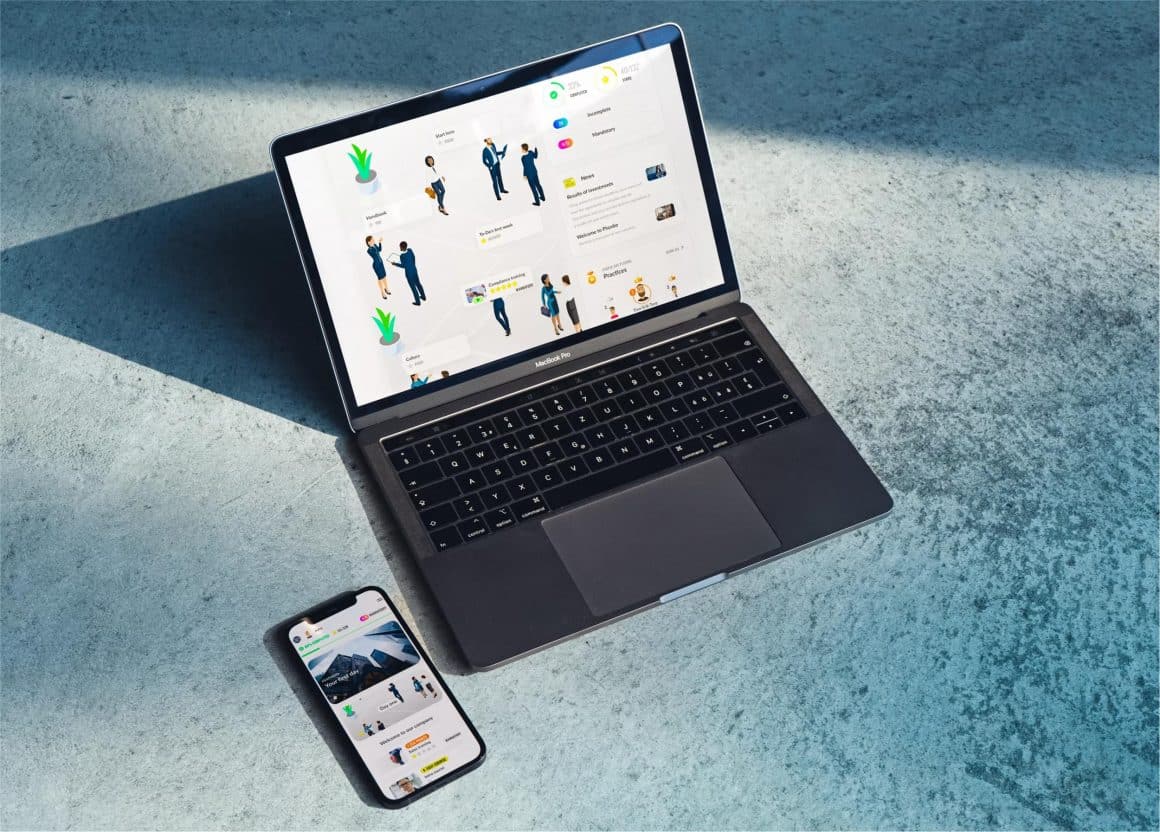Why you need to revisit your L&D metrics
The way the success of employee training is measured is changing.
In the past few years, a lot of factors have emerged that affect L&D outcomes and create the need to revisit your approach to measuring training effectiveness. These are:
The changing role of HR
HR has transformed1 into an increasingly strategic position, which means more interactions with the C-Suite and increased responsibility to contribute to the organization’s success.
There are many factors that have influenced this shift.
Firstly, the flexible workforce. Fifty-eight percent2 of job holders in the US now have the option to work from home full-time or at least part of the week. In the UK, the number is lower but still substantial — 44%3 of employees report home or hybrid working. HR now grapples with managing talent spread across diverse locations. Traditional methods of measuring L&D success, often designed to measure in-person training, do not adequately capture the effectiveness of remote learning initiatives. Analytics tools built into the products and platforms are a more effective tool for feedback on individual patterns, performance, and the wider metrics that indicate how the training is working overall.
Secondly, higher employee turnover. Linked to increased work flexibility, the hybrid workforce often has weaker social connections4 at work, leading to continuously increasing employee turnover. This troubling trend sets HR managers with yet another challenge—establishing a culture of employee engagement.
“The continuous rise in employee disengagement poses a direct challenge to businesses, making the effective measurement of L&D not just a priority, but a necessity. With 87% of employees disengaged and $500 billion lost annually in the U.S. alone in productivity, it’s clear that traditional L&D metrics are no longer sufficient.”
Mindaugas Petrutis
CEO | Coho
With these metrics becoming a priority in order to achieve business goals, HR professionals are central to achieving and reporting on ROI.
Ongoing digital transformation – addressing resistance to change
Seventy percent5 of companies were performing digital transformation across different departments and functions at the same time in 2023. This provides another major challenge for L&D managers — they have a continuous fight against change resistance.
“For many different reasons, individuals and groups react differently to change:
– to passively resist it;
– to try to undermine it;
– to sincerely embrace it.
Ignoring the emotional response to change is a mistake.”
Erin Shearer
Learning and Development Leader | Erin Shearer Consulting
L&D teams have been instrumental in facilitating digital adoption. However, many are yet to establish methods for monitoring the adoption of new technology and procedures.
The need for new learning approaches
Remote work empowers employees to take charge of their own learning journeys. As a result, L&D methods increasingly emphasize self-directed learning, requiring new metrics and tools for assessing individual progress and development.
Another trend in L&D is social learning (or social eLearning in remote teams) — a method that involves obtaining information through social contexts. To encourage it, HR and L&D teams need to create guided social activities that mimic informal learning. And since traditional L&D KPIs don’t support unconventional learning methods, we’re faced with another challenge, which is measuring the success of such approaches.
The role of AI in shaping employee experiences
Seventy percent6 of companies incorporate AI in their L&D programs. Indeed, AI fosters personalization, allowing L&D teams to enable customized learning experiences more efficiently than ever.
Challenges of AI for employee engagement:
“While AI promises to revolutionize L&D with personalized learning paths, there’s a real risk of deepening the disconnect in the workplace. The future of L&D won’t be focused only on AI-driven customization but on using AI to enable more human connections at scale.
We’re heading towards a landscape where tools and platforms will need to do more than just adapt to individual learning styles—they’ll need to actively bridge the gap between digital convenience and human interaction. AI should be a means to bring employees together for collaborative learning experiences, not isolate them behind screens.
In my view, the future of L&D lies in using AI not just for personalization, but for creating shared, engaging learning journeys.”
Mindaugas Petrutis
CEO | Coho
And while you’re striving to strike the balance between AI-powered learning experiences and human touch, there’s a perfectly safe way to implement AI into your employee education program — enable AI-driven advanced analytics.
The ability to tap into insights more easily and efficiently unlocks a completely new level of L&D performance analysis in your organization. With AI, you get access to enhanced skill assessment methods and predictive analytics that will change the way you measure your L&D effectiveness.
All things considered, let’s move on to the list of metrics today’s HR and L&D teams need to measure the success of their learning and development efforts.
Corporate learning and development KPIs
We’ve compiled seven core L&D KPIs that will help you measure the business impact of your program.
1. Onboarding speed
One of the most important metrics is the time it takes for your new hires to complete onboarding and get up to speed.
While it’s good to monitor how a new employee proceeds through the onboarding flow — e.g., where they might have got stuck or needed more time to complete a task — it doesn’t give you a complete picture. The ultimate goal of onboarding is to help a new member of the organization blend in as fast as possible. With that in mind, always assess the time it takes for new hires to integrate into their teams and adapt to the company culture.
2. Software and process adoption
This metric focuses on measuring the success of your digital transformation efforts.
- Training completion: If you use a digital adoption solution (and you should) to help employees navigate new technology, you can also find insights into users’ engagement with in-app training. This is a solid indicator of the workforce’s overall willingness to support the change.
- Usage rates: In the same platform, you should be able to assess how frequently and extensively employees engage with the software.
- Reduction in manual processes: If the goal of your digital transformation strategy is increasing operational efficiency, a reduction in manual efforts is the first sign of the program’s success.
3. Job Impact
Every employee training program, even if it’s aimed at fostering collaboration and a sense of community, has one ultimate objective—to improve employee performance. It means that, while your program is running, the development of your employees’ KPIs are your KPIs.
Depending on the department your program is targeted at, you’ll be monitoring the dynamics of different metrics. Here are just a few examples:
- Customer metrics (NPS, CSAT, CLTV, etc.) are relevant for customer-facing teams.
- Conversion rates help to assess the impact of sales training.
- Issue resolution time measures the time taken by IT and technical teams to resolve product issues.
4. Employee satisfaction
Sometimes you just need to talk to your employees to learn how your L&D program is performing. Run regular surveys to collect feedback from learners on how (and whether) training makes them feel more confident in their roles.
But this time, instead of limiting your questionnaire to typical L&D questions (e.g. “How well is our company doing in terms of professional development activities?), ask them how they feel about ongoing organizational change and whether the training offered helps them keep up with it.
5. Staff retention
With employee turnover increasing mercilessly, internal learning and development is your greatest asset in attempts to retain talents. In fact, 85.29%7 of respondents agree that offering continuous learning and growth opportunities to employees helps to reduce turnover rates.
Continue to monitor the dynamics of your employee retention rates as you encourage L&D to see if it has the desired impact on your workforce.
6. Internal mobility
If your employees feel confident to transfer to another position within your company, it indicates you’re doing things right. And given that 89%8 of HR leaders haven’t made career paths within their organizations clear for the majority of employees, it can also become your competitive advantage over other employers.
To evaluate your internal mobility rate, you’ll need to divide the total number of internal movements by your total headcount and multiply the result by 100. Just like any other L&D KPI, the resulting number will only be useful if you compare it to your internal mobility rate before the implementation of the said L&D program.
Pro tip: AI-powered L&D solutions like Disprz9 assess employee performance against skills required for a specific role, making it easier to create internal promotion plans and stick to them.
7. Custom objectives
While increased staff retention or internal mobility are desirable ultimate outcomes of corporate learning and development, you can only measure those in the long run. That’s why you also need smaller (and more achievable) objectives. These may include:
- Training completion rate: This top-level metric will hardly tell how your L&D program has helped to boost sales, but it’s a critical indicator of how engaging your training content is.
- Application of knowledge: Modern training systems will help you create realistic environments to handle hands-on assessments. Attensi’s gamified simulation training platform allows you to test your teams with scenario-driven dilemmas and minigames.
- Return on investment (ROI): While it’s hard to calculate the return on your training investment on a large scale, it’s absolutely doable with smaller projects. For instance, you may assess the ROI of your sales training program by measuring your sales revenue pre- and post-training and comparing the profit against the investment.
Let AI level up your L&D
Today’s AI-powered L&D systems don’t require you to manually monitor and calculate all these KPIs. Not only does AI turn large amounts of data into actionable insights but also creates accurate forecasts to help you anticipate future L&D needs.
Attensi uses AI to create highly personalized, gamified learning experiences for your employees, and our built-in analytics tools can help you to accurately measure the impact.




